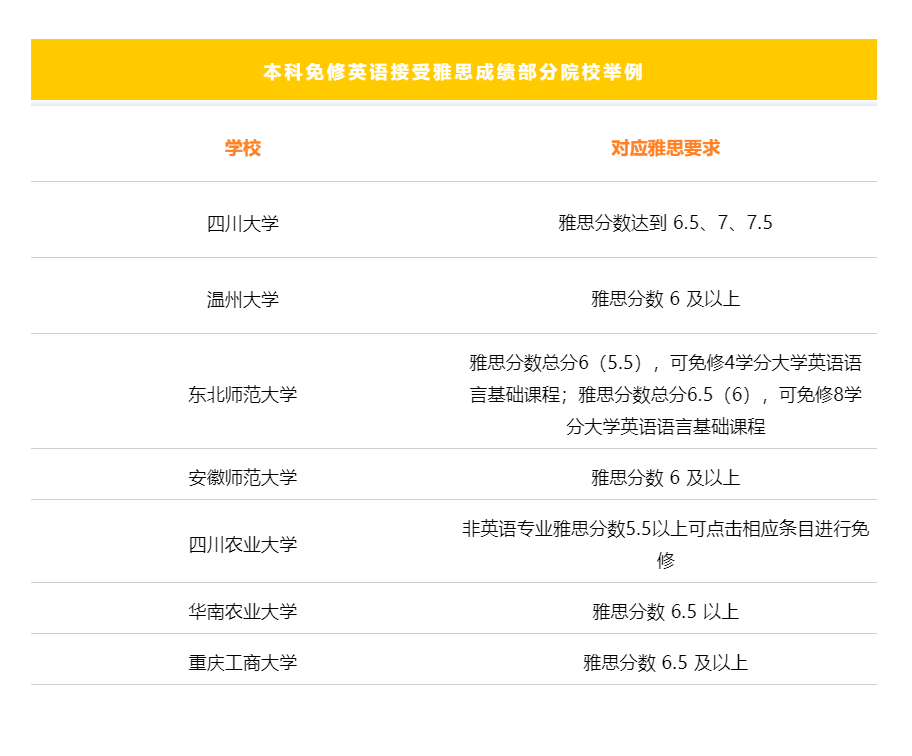托福阅读3个常见扣分原因盘点解读, 全部克服高分有保证,今天小编给大家来托福阅读3个常见扣分原因盘点解读,希望能够帮助到大家,下面小编就和大家分享,来欣赏一下吧。
托福阅读3个常见扣分原因盘点解读 全部克服高分有保证
托福阅读常见扣分原因:时间管理
刚开始接触托福阅读并且第一次进行模考的同学可能都会有这种感觉,那就是托福阅读部分的时间真的很紧张,虽然看似给出了整个托福考试听说读写四个部分中最多的考试时间,但实际上由于阅读题目数量较多,每篇文章的篇幅也很长,考生在解答托福阅读题时始终都处于很大的时间压力之下,这就对考生的时间管理能力提出了相当高的要求。小编建议大家根据自己的情况来制定时间管理的策略。
如果你是那种无法在规定时间内做完题目,或者每次都只是勉强赶上最后一点时间才做完题目,那么你首先要做的是整体提速,具体做法是通过大量做题增加训练量和积累解题经验先把阅读基础打好,之后再结合各个题型的解题时间来进一步进行细节分配和解题思路流程的优化,争取从每道题目里都节省出时间来,哪怕每道题目只能提升个几秒钟,积累起来也会有不少时间,这会让你的时间压力减轻很多。
而如果你本来就能够提前2-3分钟以上做完阅读,那么多余的时间也不要浪费掉,拿来检查回顾一下之前做过的题目,特别是那些分值较高,难度较大,自己其实也没太大把握的题目。通过检查也许你能挽回一些错误选择,拿到更好的阅读成绩。
托福阅读常见扣分原因:错过关键词
托福阅读解题中,因为粗心大意或在时间压力下强行提速而错过漏看一些关键词信息是很常见的扣分原因,而这种错过主要可以分为两大类。
第一类错过是在读文章环节。托福阅读文章从选材上来说偏向于学术专业科普性质的话题和内容,因此文章本身有一定难度。这类文章的特点就在于非常讲究叙述的逻辑性。而体现这种逻辑思维的关键点就在于各类过渡词汇,考生在阅读文章时如果不够仔细读得太粗略匆匆扫过,常会忽略掉这些带有逻辑属性的过渡词汇,这就很容易导致大家在对文章内容理解上的偏差,会对之后的做题产生较为严重的影响,特别是在阅读句子插入题型时,没看过渡词搞不清楚逻辑关系很容易让大家做出错误的选择。
第二类错过是在审题环节。托福阅读在出题上的一个特点或者说陷阱就是把一些关键性质的词汇放在提问的最后给出,考生审题不仔细,没读完题目就觉得自己已经知道题目在问什么而进入解题环节,那么就还很有可能会踩中这类陷阱,特别是诸如NOT, EXCEPT之类的词汇,没注意看的同学会把带有这类词汇的否定事实信息题当成事实信息题来做,那么做题题目自然也就毫无奇怪了。大家不要觉得这种低级错误自己不会犯,结合ETS官方的数据统计,漏看这类信息而把整个解题思路搞反做错题目的情况绝对不在少数,大家需要引起警惕。
托福阅读常见扣分难点:纠结细节
纠结于细节的情况在托福阅读过程中也不少见,或是一道找不到答案的难题,或是一个看不懂的长难句,又甚至是一个自己不理解的生词词组,总有同学会在某些细节上特别纠结,非得想个明明白白较真到底才行。这种态度在备考训练的时候值得肯定,但到了考试当中就需要斟酌一下了。把有限的时间花在少数难缠的细节上真的有必要吗?学会取舍以大局为重,才是更为符合托福高分考生的实用策略和得分保证。如果你也是平时比较较真喜欢打破砂锅问到底的考生,那么小编希望你至少在托福阅读考试中,可以适当控制和收敛一下自己的习惯,先把题目高效准确地做完才是高分的基础所在。
托福阅读之如何提高理解能力
对于进入托福备考的同学来说,相信大家都已经知道,托福阅读考试都是以选择题的方式出题,这样的方式和我们参与过的中高考或是四六级考试,看似有着几分相似。但是,对于考生来说,想要在选择题又更高的准确率,对于全文的理解就是有了更高的要求。中国考生在复习备考托福阅读理解题时,做到扬长避短,把复习的重点放在新出现的和自己相对生疏的题型练习上是非常明智的选择。特别是篇章应用题和基础理解题中的插话题和修辞目的题。当然,传统题型中的难点(如:推论题)也应特别下功夫才行。
在进行大量阅读时,选择阅读材料很重要。首先,在难度上,要选择略高于自己的现有阅读水平的材料,这样才不会有严重的挫败感,才能有所提高。另外,在题材方面,不能只选择自己感兴趣的,而要根据新托福阅读题目的特点,选择各个学科的阅读材料,但是这些材料的专业性不要太强。
平时要正确地进行精读训练:
1. 首先要从单词入手:扩大自己的词汇量,不仅要知道它的汉语解释,还要掌握它的英语定义及用法,尤其是单词在文章中的用法,它有无巧妙之处,是否有特定的意义。
2. 其次要从"语法"入手:这里所说的"语法"不仅指句子的主、谓、宾成份及句子主干,更重要的是指对各种语法现象在思想表达方面的作用及相应的结构形式。当然,在开始阶段需对某些语法结构复杂的句子进行分析。
3. 再次,是从句型入手:精读时,一定要学习各种好的句型,并模仿造句。同时,对于一些长句要进行分析。
4. 最后,要从文章"逻辑"入手:理清作者思想发展的脉络。提炼各个段落的内容,清楚各个段落如何组成了文章有机整体,理解作者运用的事例与他所阐述问题观点之间的联系,明确他是以什么样的方式(讲故事,列举数据,引经据典)来表达自己的观点的。
精读可以使你对文章的方方面面都有深刻的理解,无论从形式到内容,从语言到思想都是如此。
泛读要泛首先是在材料的选择上要题材广泛,因为天文、地理、医学、历史、文化、教育、艺术等内容,在托福考题中都会涉及。推荐考生多读读《国家地理杂志》和《DISCOVERY》,既可扩大知识面,也是备考新托福阅读的好素材;其次难度应控制在每页少于五个生词;最后是在机会和手段的把握上:书刊杂志的目录、新闻标题和导语、广告通知和产品及旅游宣传材料都是绝佳的泛读材料。背诵不失为精读复习巩固的好办法。背诵不应贪大求全,应重点突出。
以上就是托福阅读中如何扬长避短的窍门,此外,要养成“边读边记”的习惯,这样会让阅读效率大大提高。从这个角度来看,同学们更应该以托福考试为契机,培养出一种良好的阅读习惯,从而在学习和研究中达到事半功倍的效果。
托福阅读考试备考小技巧介绍
分段托福阅读做题,省去“扫读”的时间
在四六级考试中,阅读时间也很少,虽然单词相对简单,但是篇幅较长,逐字阅读肯定是没有时间的,所以做题技巧中扫读是很重要的环节,目的是找到与题目相关的段落或者语句才能找到做题依据。而在托福阅读考试中,是每阅读完一段就做只涉及该段的题目,信息集中,重要的是节省了大量的时间,缓解了托福阅读文章通篇的眩晕感。而这部分题目就是四六级中常说的细节题。
文章说明性强,生词不必怕
托福阅读考试中对单词量的要求还是很大的,即使单词量很大了,也难免会遇上生僻词的情况,而托福考试中选用的文章说明性特别强,往往是自定义 — 自解释的模式,遇到生词,即使不知道什么意思,也可以根据上下文语境弄清它们之间的关系,运用逻辑推理的方法作出正确的答案。其次,还可以分析选项,进行对比,往往会发现选项中通常会出现两个意思相反的选项,此时再仔细重读原文就可以排除错误选项了。
托福阅读 近义词选择有技巧
几乎每段中都会有生词意思辨析题,有些词考生一看就认识,这样的题目就很容易了,但是也不能粗心大意,如果时间富裕或者把握不大,可以把选项带入文章中检查一遍。对于那些不认识的词汇,也是有许多技巧的。首先是分析词性,采用排除法排除词性不一致的选项。其次是用代入法。选项中给出的词意一般就是考生认识的,将选项带入,分析一下是否能够保证原文合情合理,通顺。
分段托福阅读打基础,全篇文章心里明
在分段阅读的同时,可以记下关键词或者中心句,在文章结束时就可以有根据回想起整篇文章的脉络结构,逻辑关系,对14题的选择有很大帮助。同时题目中也明确给了做题方法,即没有提到的信息或者不重要的观点就可以排除了。
以上就是托福小编带来的关于托福阅读满分四大技巧揭秘的讲解,希望对同学们的托福考试有所帮助。考生在托福考试备考的时候一定要事先了解一下类似的问题,这样能够给大家的托福备考带来不小的帮助。大家一定要早准备!通过积累,一定会有所收获!
托福阅读素材之微笑的力量
托福阅读材料:The hidden power of smiling
0:11
When I was a child, I always wanted to be a superhero. I wanted to save the world and make everyone happy. But I knew that I'd need superpowers to make my dreams come true. So I used to embark on these imaginary journeys to find intergalactic objects from planet Krypton, which was a lot of fun, but didn't yield much result. When I grew up and realized that science fiction was not a good source for superpowers, I decided instead to embark on a journey of real science, to find a more useful truth.
0:41
I started my journey in California, with a UC Berkeley 30-year longitudinal study that examined the photos of students in an old yearbook, and tried to measure their success and well-being throughout their life. By measuring the students' smiles, researchers were able to predict how fulfilling and long-lasting a subject's marriage would be,
1:03
(Laughter)
1:04
how well she would score on standardized tests of well-being, and how inspiring she would be to others. In another yearbook, I stumbled upon Barry Obama's picture. When I first saw his picture, I thought that his superpowers came from his super collar.
1:20
(Laughter)
1:21
But now I know it was all in his smile.
1:24
Another aha! moment came from a 2010 Wayne State University research project that looked into pre-1950s baseball cards of Major League players. The researchers found that the span of a player's smilecould actually predict the span of his life. Players who didn't smile in their pictures lived an average of only 72.9 years, where players with beaming smiles lived an average of almost 80 years.
1:52
(Laughter)
1:54
The good news is that we're actually born smiling. Using 3D ultrasound technology, we can now see that developing babies appear to smile, even in the womb. When they're born, babies continue to smile -- initially, mostly in their sleep. And even blind babies smile to the sound of the human voice. Smiling is one of the most basic, biologically uniform expressions of all humans.
2:20
In studies conducted in Papua New Guinea, Paul Ekman, the world's most renowned researcher on facial expressions, found that even members of the Fore tribe, who were completely disconnected from Western culture, and also known for their unusual cannibalism rituals,
2:36
(Laughter)
2:37
attributed smiles to descriptions of situations the same way you and I would. So from Papua New Guinea to Hollywood all the way to modern art in Beijing, we smile often, and use smiles to express joy and satisfaction.
2:56
How many people here in this room smile more than 20 times per day? Raise your hand if you do. Oh, wow. Outside of this room, more than a third of us smile more than 20 times per day, whereas less than 14 percent of us smile less than five. In fact, those with the most amazing superpowers are actually children, who smile as many as 400 times per day.
3:22
Have you ever wondered why being around children, who smile so frequently, makes you smile very often? A recent study at Uppsala University in Sweden found that it's very difficult to frown when looking at someone who smiles. You ask why? Because smiling is evolutionarily contagious, and it suppresses the control we usually have on our facial muscles. Mimicking a smile and experiencing it physicallyhelps us understand whether our smile is fake or real, so we can understand the emotional state of the smiler.
3:58
In a recent mimicking study at the University of Clermont-Ferrand in France, subjects were asked to determine whether a smile was real or fake while holding a pencil in their mouth to repress smiling muscles. Without the pencil, subjects were excellent judges, but with the pencil in their mouth -- when they could not mimic the smile they saw -- their judgment was impaired.
4:21
(Laughter)
4:23
In addition to theorizing on evolution in "The Origin of Species," Charles Darwin also wrote the facial feedback response theory. His theory states that the act of smiling itself actually makes us feel better,rather than smiling being merely a result of feeling good. In his study, Darwin actually cited a French neurologist, Guillaume Duchenne, who sent electric jolts to facial muscles to induce and stimulate smiles. Please, don't try this at home.
4:52
(Laughter)
4:54
In a related German study, researchers used fMRI imaging to measure brain activity before and after injecting Botox to suppress smiling muscles. The finding supported Darwin's theory, by showing that facial feedback modifies the neural processing of emotional content in the brain, in a way that helps us feel better when we smile. Smiling stimulates our brain reward mechanism in a way that even chocolate -- a well-regarded pleasure inducer -- cannot match.
5:27
British researchers found that one smile can generate the same level of brain stimulation as up to 2,000 bars of chocolate.
5:36
(Laughter)
5:38
Wait -- The same study found that smiling is as stimulating as receiving up to 16,000 pounds sterling in cash.
5:47
(Laughter)
5:48
That's like 25 grand a smile. It's not bad. And think about it this way: 25,000 times 400 -- quite a few kids out there feel like Mark Zuckerberg every day.
6:00
(Laughter)
6:01
And unlike lots of chocolate, lots of smiling can actually make you healthier. Smiling can help reduce the level of stress-enhancing hormones like cortisol, adrenaline and dopamine, increase the level of mood-enhancing hormones like endorphins, and reduce overall blood pressure.
6:19
And if that's not enough, smiling can actually make you look good in the eyes of others. A recent study at Penn State University found that when you smile, you don't only appear to be more likable and courteous, but you actually appear to be more competent.
6:36
So whenever you want to look great and competent, reduce your stress or improve your marriage, or feel as if you just had a whole stack of high-quality chocolate without incurring the caloric cost, or as if you found 25 grand in a pocket of an old jacket you hadn't worn for ages, or whenever you want to tap into a superpower that will help you and everyone around you live a longer, healthier, happier life, smile.
7:05
(Applause)
托福阅读3个常见扣分原因盘点解读
全部克服高分有保证,今天小编给大家来托福阅读3个常见扣分原因盘点解读,希望能够帮助到大家,下面小编就和大家分享,来欣赏一下吧。托福阅读3个常见扣分原因盘点解读 全部克服高分有保证托福阅读常见扣分原因:时。下面小编给大家分享托福阅读3个常见扣分原因盘点解读,希望能帮助到大家。 托福阅读3个常见扣分原因盘点解读文档下载网址链接:
下一篇:返回列表






